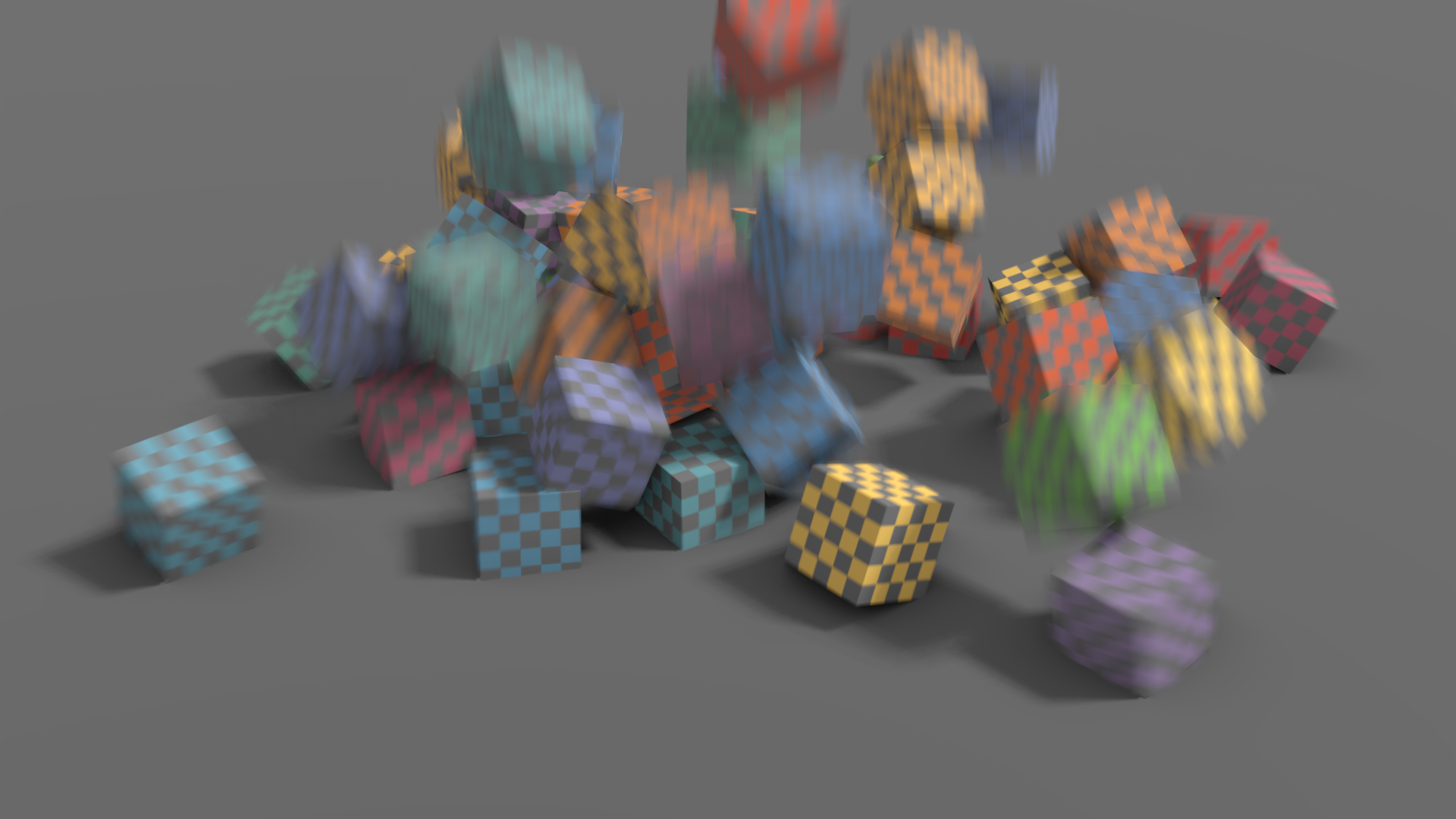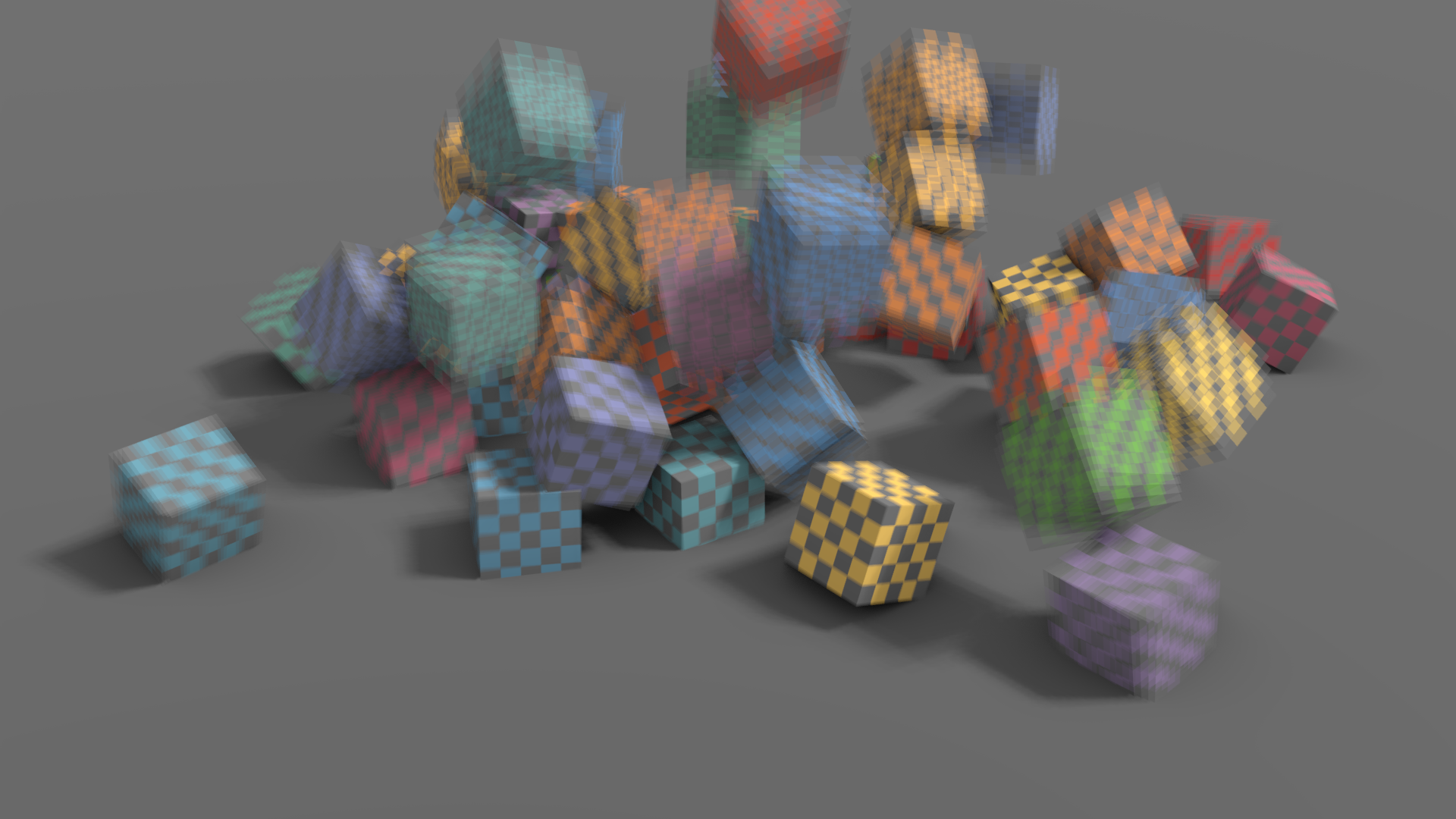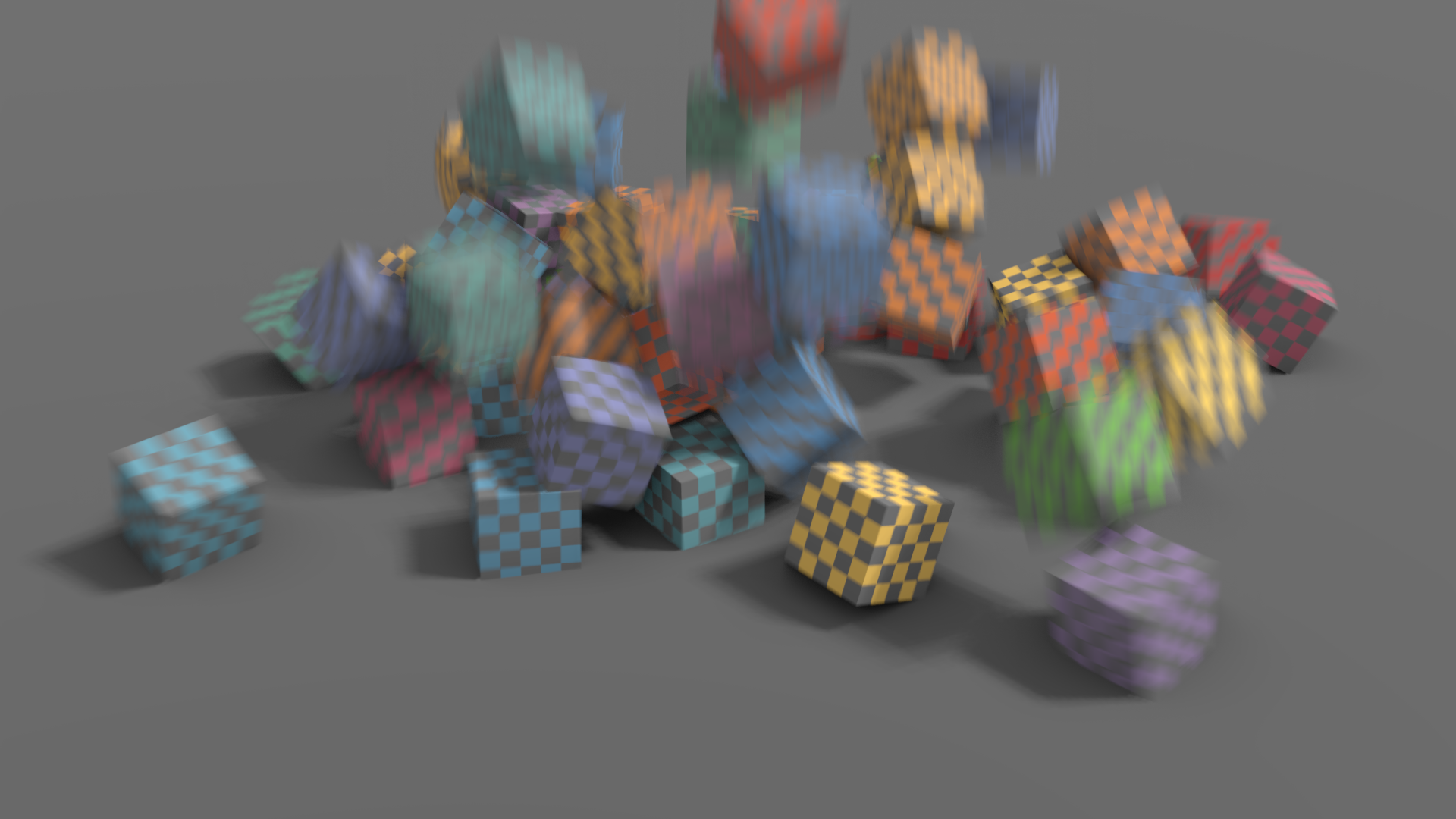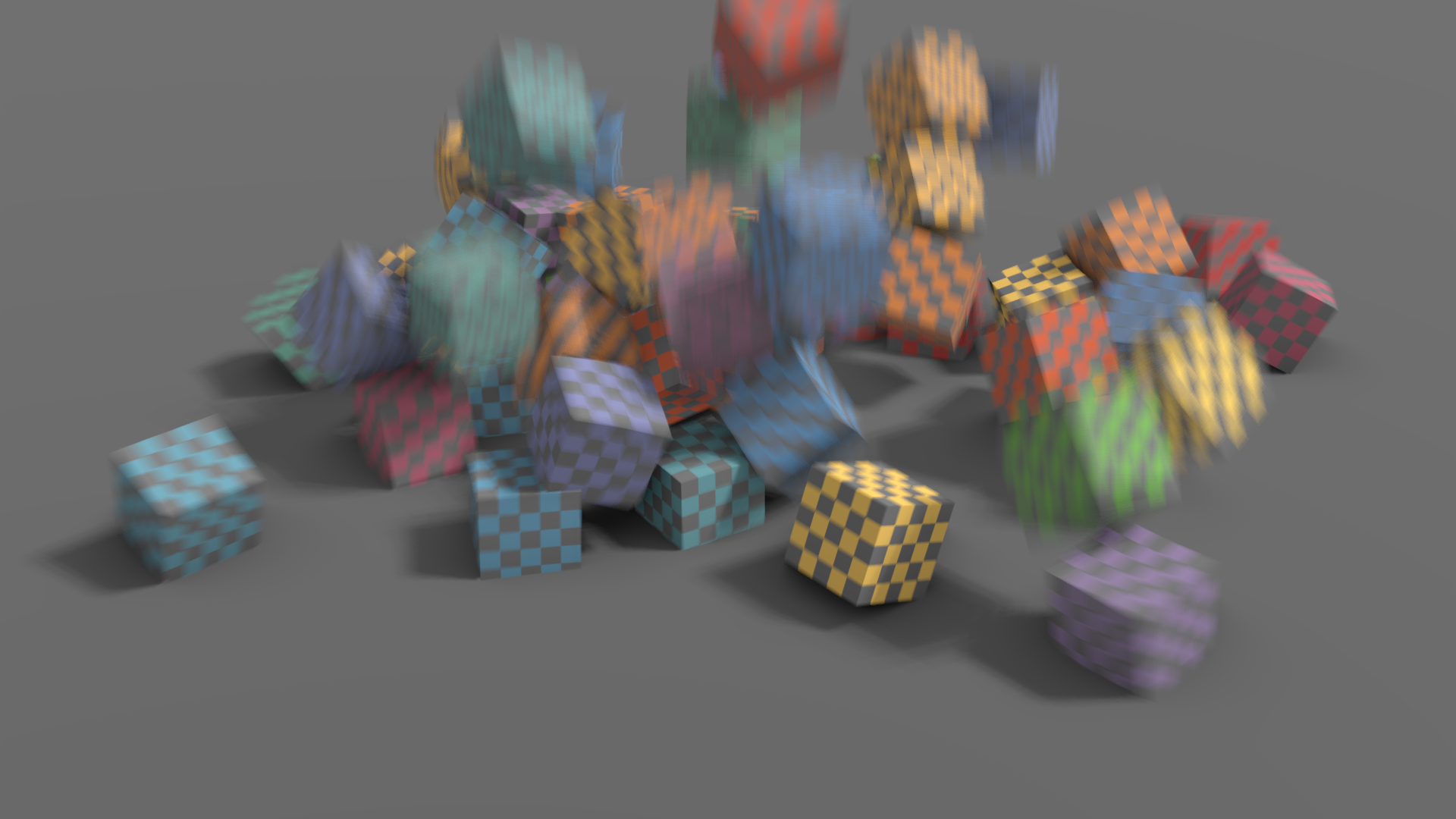Размытие движения (motion blur)¶
Ссылка
- Панель:
По умолчанию, анимация в Blender визуализируется как секвенция совершенно неподвижных изображений. Хотя они отлично подходят для эффектов остановки движения и провалов во времени, выглядит это нереалистично, поскольку быстро движущиеся объекты должны быть размыты по направлению своего движения, как в кадре фильма, так и на фотографии с реальной камеры.
Примечание
Размытие движения во вьюпорте видно только во время воспроизведения анимации и использует более простой алгоритм, чем окончательный рендеринг. То же самое относится и к рендерингу вьюпорта.
- Положение (position)
Определяет, в какой момент открывается затвор относительно текущего кадра.
- Начать в кадре (start on frame):
Затвор начинает открываться на текущем кадре.
- Центр в кадре (center on frame):
Затвор полностью открыт на текущем кадре.
- Закончить в кадре (end on frame):
Затвор полностью закрыт в текущем кадре.
- Затвор (shutter)
Время (в кадрах) между открытием и закрытием затвора.
- Погрешность выделения (bleeding bias)
Используется при постобработке размытия, чтобы избежать размытия фона над передним планом. Более низкие значения уменьшат выделение фона на элементы переднего плана.
- Максимальное размытие (max blur)
Максимальное размытие предназначено для работы в качестве инструмента оптимизации, ограничивая количество пикселей, для которых рассчитывается размытие.
- Шаги (steps)
Это контролирует количество шагов, используемых при накопленном размытии, и, следовательно, его точность. Больше шагов означает больше времени рендеринга.
Примечание
При использовании нескольких временных шагов – количество сэмплов рендеринга округляется до следующих нескольких шагов, для обеспечения равномерного распределения сэмплов по шагам.
EEVEE разделяет рендеринг на несколько временных шагов и накапливает результат, известный как «накопление размытия в движении». Этот метод точен, но требует многих шагов для получения чистых градиентов. Это используется в сочетании с размытием постобработки для устранения пробелов между этапами. Каждый шаг соответствует полной переоценке сцены и может значительно увеличить время рендеринга. Добавив больше шагов, вы также можете уменьшить значение параметра максимального размытия, поскольку размытие после обработки должно охватывать меньшее расстояние.
- Кривая затвора (shutter curve)
Использовать индивидуальную кривую затвора.





